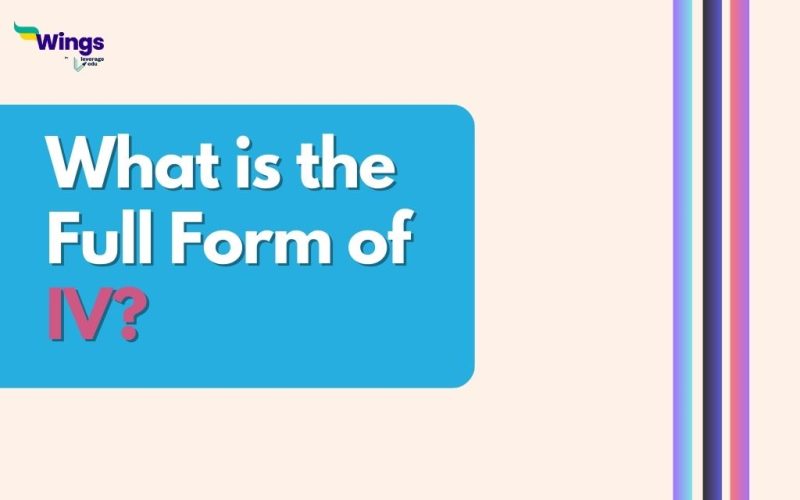In the field of medicine, various abbreviations and acronyms are used to simplify complex terms. One such abbreviation is “IV,” which stands for “Intravenous.” In this blog, we will understand the full form and significance of IV, its definition, applications, and benefits in healthcare.
What is IV?
Table of Contents [show]
IV stands for “Intravenous,” a term derived from the Latin roots: “intra,” meaning “within,” and “vena,” meaning “vein.” Intravenous refers to a medical procedure involving the administration of fluids, medications, or nutrients directly into a patient’s veins. By bypassing the digestive system, IV infusion allows for rapid and efficient delivery of substances into the bloodstream. This method is commonly used in hospitals, clinics, and emergencies when immediate action is required.
MBBS Colleges, Courses & Syllabus
IV Purposes and Applications
IV therapy serves various purposes and finds application across different medical fields. Some key applications of IV include:
1. Fluid and Electrolyte Replacement: IV fluids are administered to restore hydration and maintain proper electrolyte balance in cases of dehydration, blood loss, or surgical procedures.
2. Medication Administration: IV routes are used to deliver medications that require immediate effects or cannot be taken orally. This includes antibiotics, pain medications, chemotherapy drugs, and anesthesia during surgeries.
3. Nutritional Support: IV nutrition, also known as Total Parenteral Nutrition (TPN), provides essential nutrients directly into the bloodstream when a patient cannot consume food orally or has a compromised digestive system.
4. Blood Transfusions: IV transfusions are performed to replace blood components, such as red blood cells, platelets, or plasma, in cases of severe anemia, bleeding disorders, or trauma.
IV Benefits
The use of IV in healthcare offers several advantages, such as:
1. Rapid Onset: IV administration allows medications and fluids to reach their intended targets quickly, ensuring a prompt response.
2. Precise Dosage: IV therapy enables healthcare professionals to administer precise and controlled doses, adjusting them as needed.
3. Enhanced Bioavailability: Since substances administered intravenously bypass the gastrointestinal system, their bioavailability is increased, ensuring a higher concentration reaches the target tissues.
However, IV therapy also carries certain considerations, such as the risk of infection, vein irritation, and potential complications if not performed correctly. Proper training, sterile techniques, and careful monitoring are essential to ensuring patient safety.
FAQs
What is IV therapy?
IV therapy, standing for “Intravenous” therapy, is a medical procedure that delivers fluids, medications, or nutrients directly into a patient’s vein.
What are the purposes of IV therapy?
IV therapy has various applications, including:
- Replacing fluids and electrolytes in dehydration cases.
- Delivering medications that need immediate effect or cannot be taken orally.
- Providing nutrients directly into the bloodstream for patients who can’t eat or have digestive issues.
- Transfusing blood components in cases of anemia, bleeding disorders, or trauma.
What are the benefits of IV therapy?
IV therapy offers several advantages, such as:
- Faster delivery of medications and fluids for a quicker response.
- Precise and controlled dosing of medication.
- Increased bioavailability of substances due to bypassing the digestive system.
We hope this blog has helped you understand what is the full form of IV and everything related to it. If you want to know more, find the 300+ full forms list on our blog. In the world of short forms, you can rely on the Leverage edu page to know about more full forms like this! Connect with us, study abroad experts, to achieve your international dream today!
 One app for all your study abroad needs
One app for all your study abroad needs















 45,000+ students trusted us with their dreams. Take the first step today!
45,000+ students trusted us with their dreams. Take the first step today!
